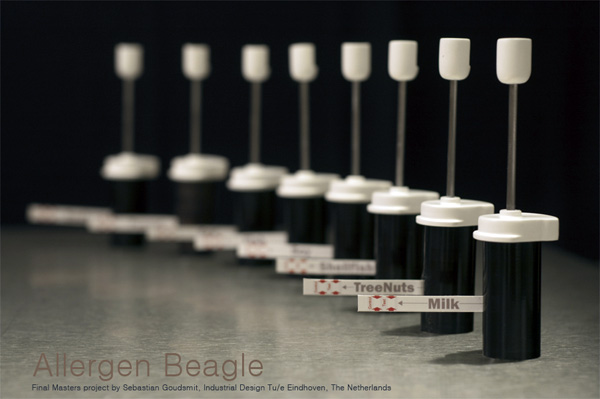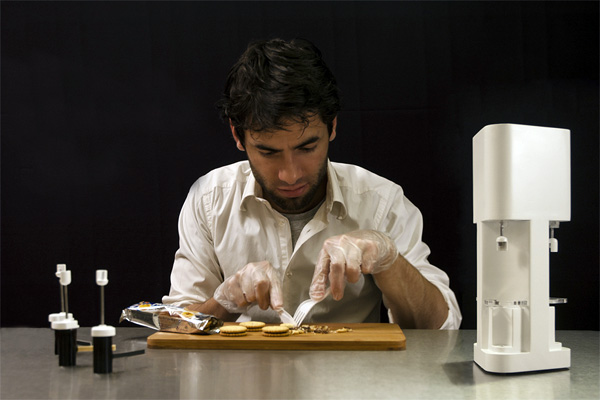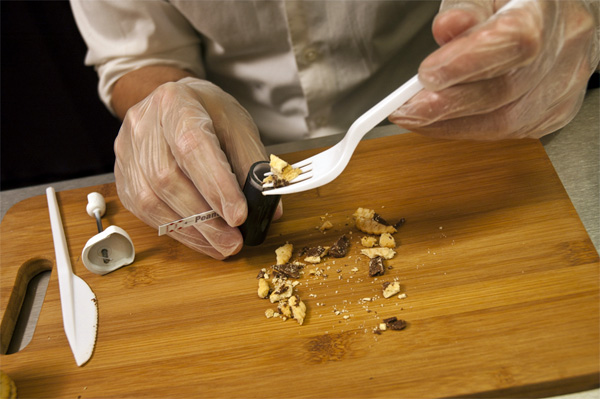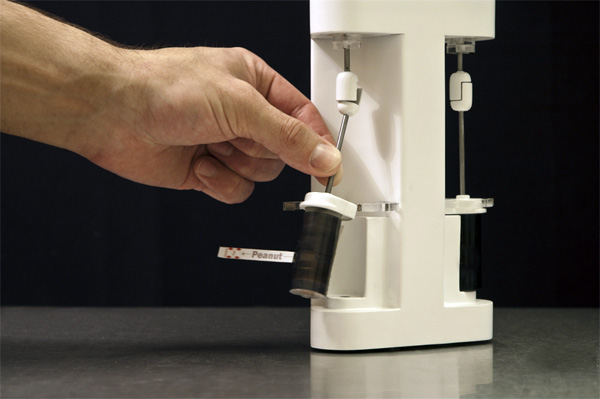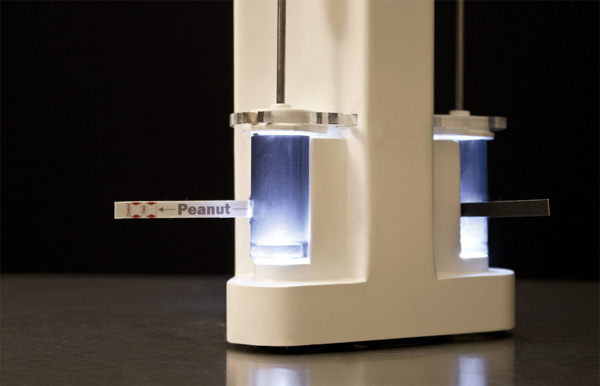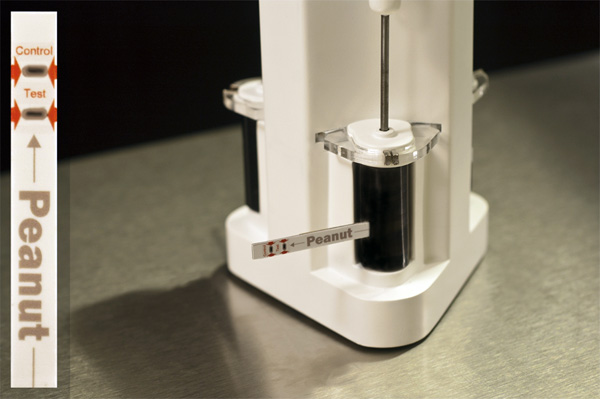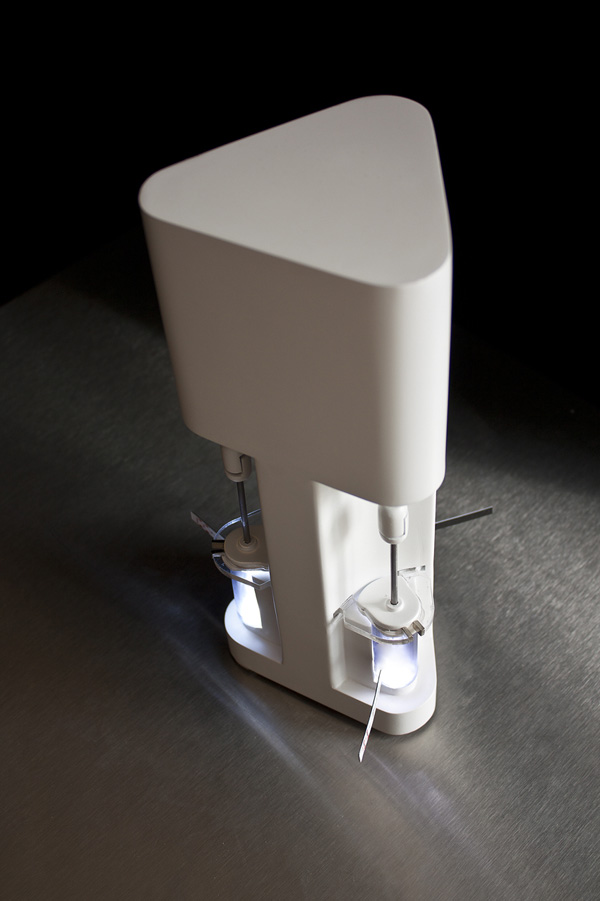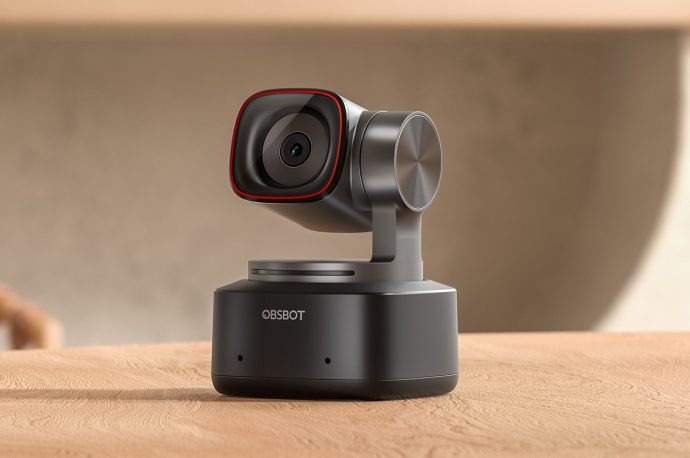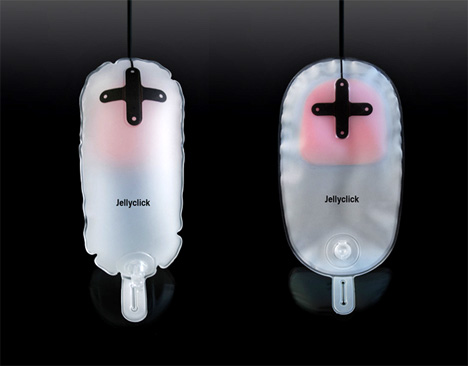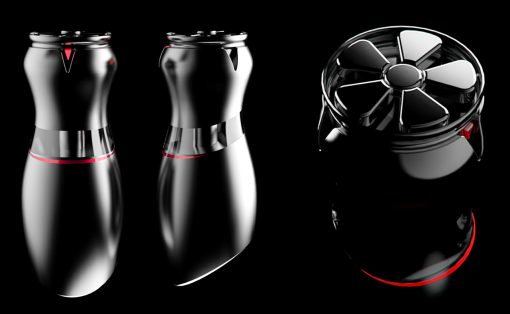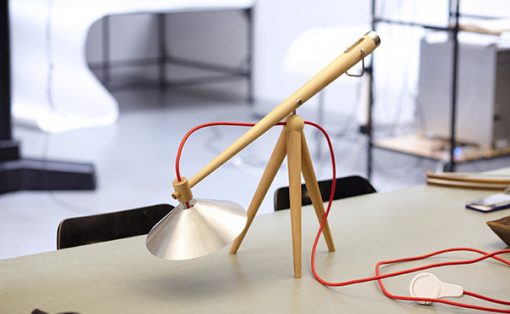Those who have severe food allergies know that a single bite of the wrong substance could be their last. This home food scanner known as the Allergen Beagle enables users to screen foods for potential allergenic contents with a straightforward process so that allergen sufferers feel some amount of relief from constantly being at risk of an allergic reaction.
Currently, the system is able to detect peanut, shellfish, gluten, lactose, hazelnut, egg, soy, almonds, and sesame by following these steps:
1. Collect small samples from the food to be screened for allergens
2. Select test tubes needed (one test-tube needed per allergen to be tested)
3. Fill tubes with the sample
4. Insert the test tube into the Allergen Beagle
5. Allow automated process to complete procedure
6. During the procedure a bright light elicits the process
7. When the light turns off, the test can be read: if the Test line colours dark, and the Control line colours dark, the allergen is present
Designer: Sebastian Goudsmit
